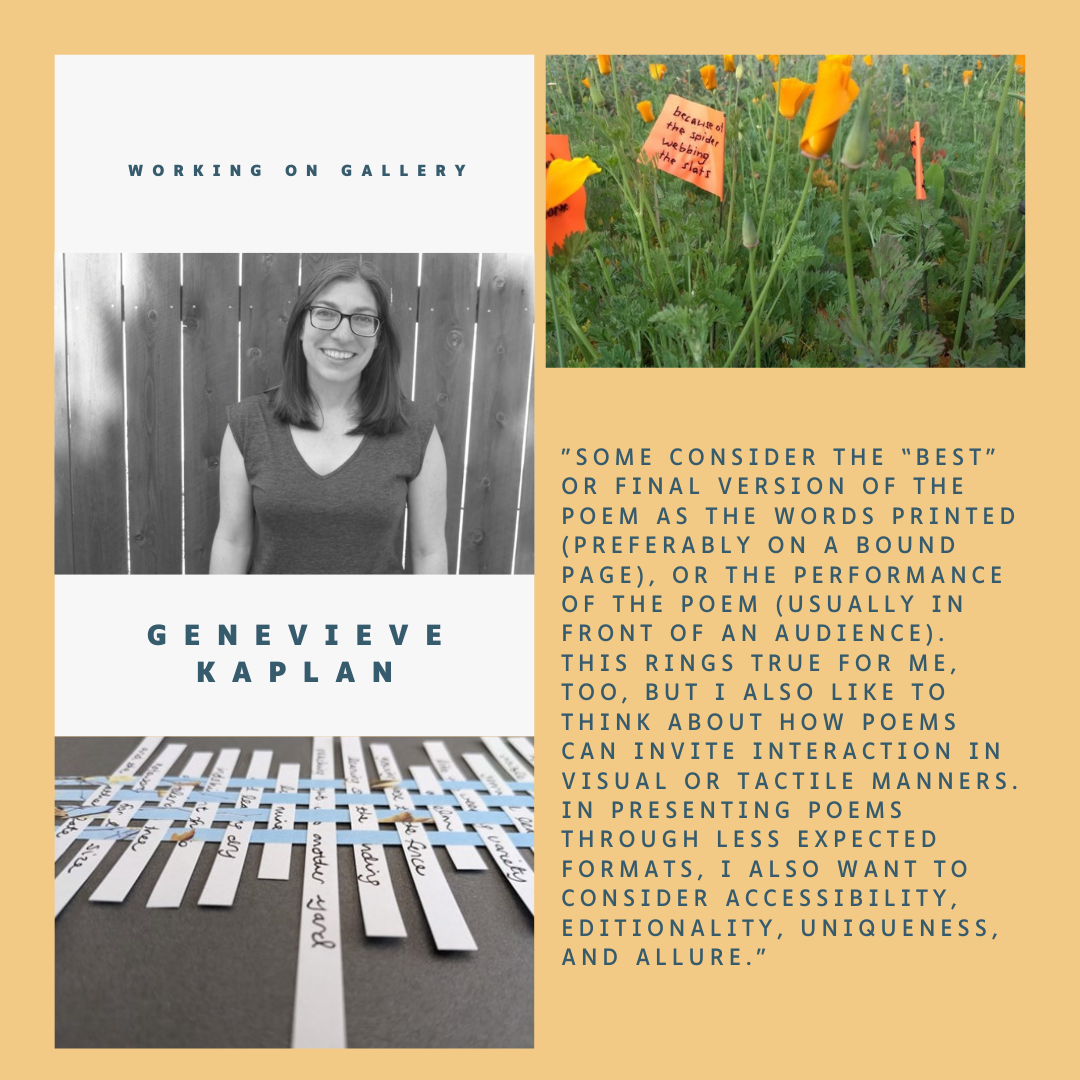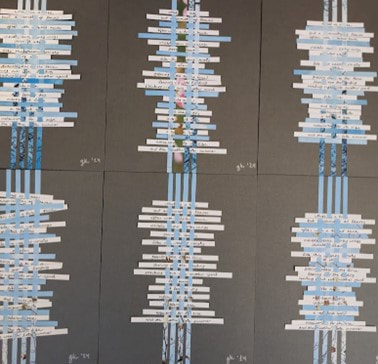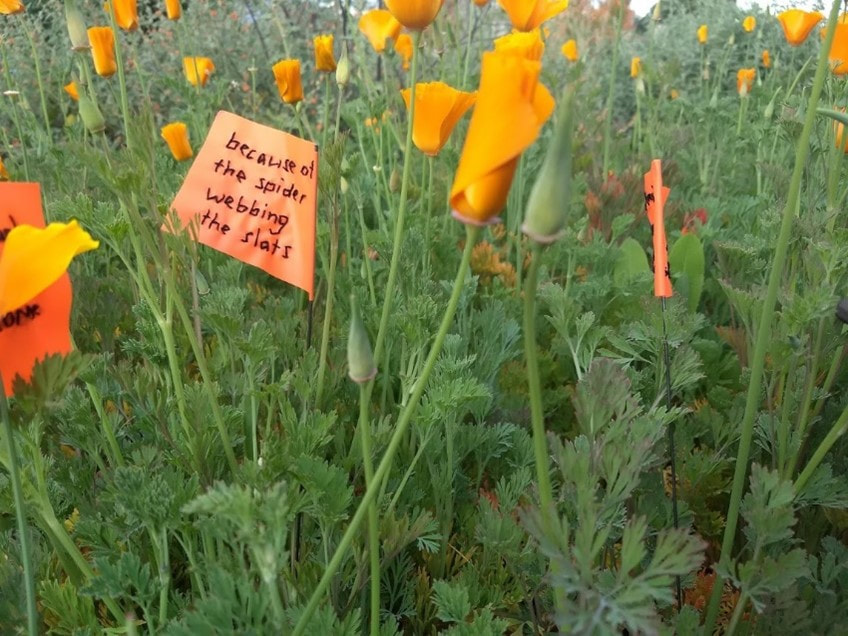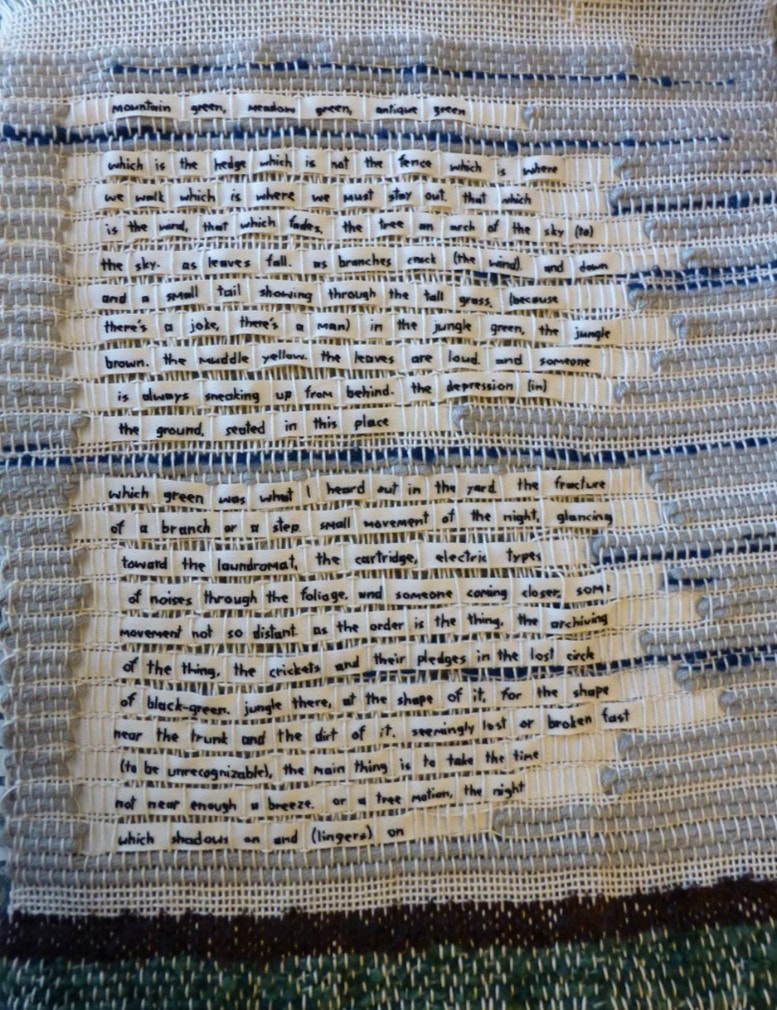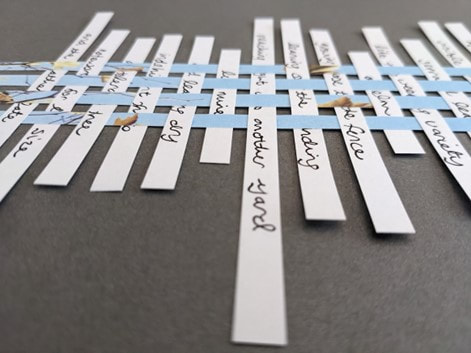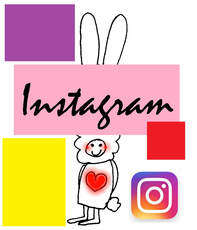|
Toad Press leaped into my mind when I started entering translation communities. During the pandemic, I had the chance to read translation submissions from several magazines.
"I love this translator!" I googled the person, and my online search ended with Toad Press several times. It was a strange feeling because this publisher seemed like to create handmade, small collections. However, their list of translators is really phenomenal. I submitted my first translation collection and received a rejection with a kind note. For the following year, I also learned that Genevieve Kaplan (editor & publisher) is a friend of my poet sister Angela Narciso Torres. I introduced myself to Kaplan at AWP Kansas City and we exchanged friendship bracelets. The Toad Press chapbooks were truly beautifully, carefully crafted - - this is really made by a passion and love of books -- and I learned that she also practices experimental poetry writing. "Some consider the “best” or final version of the poem as the words printed (preferably on a bound page), or the performance of the poem (usually in front of an audience). This rings true for me, too, but I also like to think about how poems can invite interaction in visual or tactile manners. In presenting poems through less expected formats, I also want to consider accessibility, editionality, uniqueness, and allure." - - Genevieve Kaplan I love how Kaplan approaches poetry. This definitely relates to my graphic poetry theme, "Trans. Sensory". In addition, I am so excited to have my first translation chapbook with Toad Press. Their new chapbook collections will be available at the end of this year. Genevieve KaplanThis series of woven paper broadsides is the latest iteration of my explorations into expanding possibilities for poems and thinking about how I want a poem to be experienced. Some consider the “best” or final version of the poem as the words printed (preferably on a bound page), or the performance of the poem (usually in front of an audience). This rings true for me, too, but I also like to think about how poems can invite interaction in visual or tactile manners. In presenting poems through less expected formats, I also want to consider accessibility, editionality, uniqueness, and allure. I’m pleased with this new series of broadsides, and I’m also interested in how I can trace the lineage of this series in some of my previous projects. I started moving some of my poems off the page and into other spaces a few years ago. I wanted to think about how else a reader might encounter a poem. And during the encounter, could a reader/viewer be invited not only to read but also to perhaps to physically interact, to move their body to follow the lines of poem? For example, in the flag poems pictured here, I sewed lines of a poem onto landscape flag markers and “planted” them among the poppies in my front yard. They’re small—the flags are about 4 x 5”, and they aren’t rigid, so I knew if someone wanted to read one, they’d need to bend down, get up close, and maybe touch the flag to straighten the letters. To read another flag, they’d need to move further into the poppy field. At the same time, I was working on a series of sewn and woven broadsides. I think of the broadside as a fairly traditional form, as it’s one we literary types encounter often enough, at bookstores, readings, colleges, and publication events. Most often literary broadsides are printed (letterpress or even laserjet) and present a single poem accompanied by an illustration. Poetry broadsides isolate and elevate a poem: once printed in broadside form, the poem becomes not only a poem to read but also a piece of art to admire. I have several poetry broadsides in my home, and because these poems are hung on the wall I find that I read them both more often than and differently from the poems contained in the books on my shelves. For creating broadsides of my own work, I knew I didn’t have ready access to a letterpress or a large format printer; nor did I have a lot of patience to learn new technology. But I did have a loom and some spare yarn, so I decided to sew and weave a poem into a broadside. I created a total of three woven broadsides, each of a different poem. Then I framed the broadsides in shadowboxes and tucked them into my closet. I love the broadsides’ tactility, and their unique nature. In their woven form my poems behave differently: there are wonky letters, tufts of wool, and evidence of many imperfections for a reader to contend with. Reading the woven lines makes you—well, me, anyway—want to touch them. I enjoyed the process of making them, too: I liked the idea of making a poem material—literally, making the poetic line a physical line, by embroidering letters, words, and phrases on a thin ribbon. And then later, when I wove the ribbons/lines together, those embroidered lines combined with yarn, with other discrete threads, to create a larger piece of material—in this case a poem composed of physically connected lines. These woven broadsides achieve what I intended—they offer a singular and active experience for a reader, and they underscore the labor behind the words. But these broadsides are also bulky and heavy (as framed), and, because of the time and materials that went into creating them, they’re cost prohibitive. No one really gets to see them. They don’t tap into the type of accessibility that a broadside printed in an edition of 50 or 100 might have. These material broadsides are not fancy posters one could frame or even pin on the wall. Instead, my woven broadsides are un-replicatable, unique poem-art objects. Is the best, most final version of my poem “Shift up and down the wires…,” the one tucked into my closet? I’m not sure. So I started thinking about how else to create handmade broadsides. In addition to having a lot of yarn, I also had a lot of paper, and I thought I could use the paper to create a more accessible visual and maybe tactile experience. For this next project I cut strips of paper, handwrote lines of my poem “a symmetry” onto them, and then wove into them with vertical strips of decorative paper. The text of my poem responds to my neighbor’s tree, which grows over our shared fence, drops leaves and twigs and fruits, and is always in need of trimming. When adhering the woven poem to the cardstock, I glued the weave at its junctures, and the warp—the vertical lines, the trunk of the tree—to the paper only, allowing the lines of the poem a little freedom and movement as they extend. I was excited about giving the lines of the poem (the weft of my weave) the same kind of unkept reach as the tree. I intended to create multiple “a symmetry” broadsides so the project would resemble a printed edition, a more mass-produced series. But as I was writing and weaving and gluing, I became interested in exploring variations: considering different angles and spacing for my lines, incorporating stanza breaks into the poem, and embracing variations in the printed paper warp I’d selected. The seven broadsides in the series each present the same poem, the same language, and the same paper, but each does so just a little bit differently. This woven paper broadside project achieves the kind of invitation and accessibility I’ve been after for a while now. The broadsides invite the type of curious interaction that I want for my poems; rather than presenting a legible text alongside a complementary image, they present a poem that is also itself a visual experience. The words of my poem aren’t completely clear because of the weave; some language is obscured by the warp, which means readers may skip over words or try to fill in the blanks, or just decide to engage with the words visually instead of logically. The handwritten text adds another level of visual interest and potential illegibility. I also like how the materials are simple and inexpensive. Cutting and weaving paper text in straight lines was tactile, meditative, and enjoyable but not overly time consuming. The 8 x 10” size of the finished broadsides means they’re easy to transport and simple to frame. The broadsides are flat, or can be flattened, making them essentially a two-dimensional page. And, importantly, these broadsides are a little less ephemeral. They weren’t planted briefly with my poppies, they don’t exist mainly in my experience creating them, and they aren’t only hidden in my closet. I’ve sold a few—at art fairs, on Etsy—so they’re already popping up on walls and finding new readers/viewers. For me, these broadsides reside in a sort of charming middle ground of the concerns I’ve been exploring in recent years. They succeed in evoking editionality, accessibility, uniqueness, and visual appeal. And, they invite readers to interact with the poem. Is this series the “best” version of my poem “a symmetry”? I think so. The poem also lives on the page as a text only version, but it feels a little lonely there. I find my experience looking at and reading one of my “a symmetry” broadsides to be more complete: here, the poem has tangible depth, it challenges, it evokes, and it prioritizes the experience of reading or thinking about the work over the work—the poem—itself. Genevieve Kaplan is the author of (aviary) (Veliz Books, 2020); In the ice house (Red Hen Press, 2011), winner of the A Room of Her Own Foundation‘s poetry publication prize; and five chapbooks: Felines, which sounds like feelings (above/ground, 2022), I exit the hallway and turn right (above/ground, 2020), In an aviary (Grey Book, 2016), travelogue (Dancing Girl, 2016), and settings for these scenes (Convulsive Editions, 2013). Her poems can be found in Third Coast, Puerto del Sol, Denver Quarterly, South Dakota Review, Poetry, and other journals. A poet, scholar, and book-maker, Genevieve earned her MFA in Poetry from the Iowa Writers’ Workshop and her PhD in Literature & Creative Writing from the University of Southern California. She co-edited Et Al.: New Voices in Arts Management (IOPN, 2022), an open-access collection of ideas, action, and inspiration from contemporary arts managers. Since 2003, she’s been editing the Toad Press International chapbook series, which became an imprint of Veliz Books in 2021, publishing contemporary translations of poetry and prose. Genevieve lives in southern California. Toad Press New Translation ChapbooksYou may also like...To read the full essay, click on the picture. Support Working on Gallery
$25.00
Your $25 donation will be a tremendous support for Working on Gallery's future guests and running costs. If you become a patron, your name will appear in the next Working on Gallery's article. In addition, you will receive my first poetry book, "Where I Was Born", for U.S. shipments. Or, you will receive a thank-you letter for international shipments. Working on Gallery has been used by universities, advanced-level art lectures, and writing workshops. Your donation will help this gallery be more successful. Thank you so much - Naoko Fujimoto Comments are closed.
|
Archives
July 2024
|
フジハブ
Welcome to FUJI HUB: Waystation to Poetry, Art, & Translation. This is not your final destination. There are many links to other websites here, so please explore them!
Welcome to FUJI HUB: Waystation to Poetry, Art, & Translation. This is not your final destination. There are many links to other websites here, so please explore them!
What are you looking for?
FUJI HUB Directory
Popular Sites:
Gallery of Graphic Poems
Working On Gallery
(Monthly New Article by Writers & Artists)
About Naoko Fujimoto
Contact
Naoko Fujimoto Copyright © 2024
FUJI HUB Directory
Popular Sites:
Gallery of Graphic Poems
Working On Gallery
(Monthly New Article by Writers & Artists)
About Naoko Fujimoto
Contact
Naoko Fujimoto Copyright © 2024
